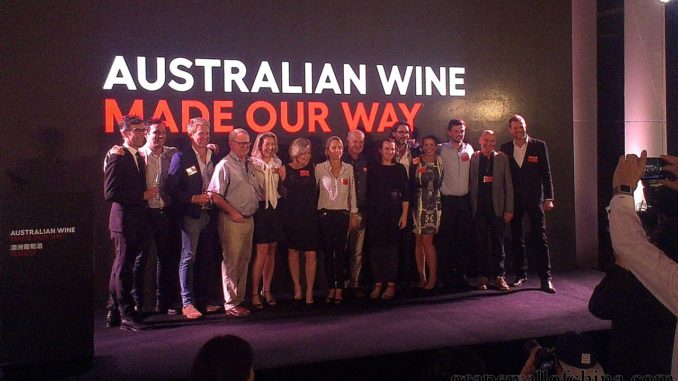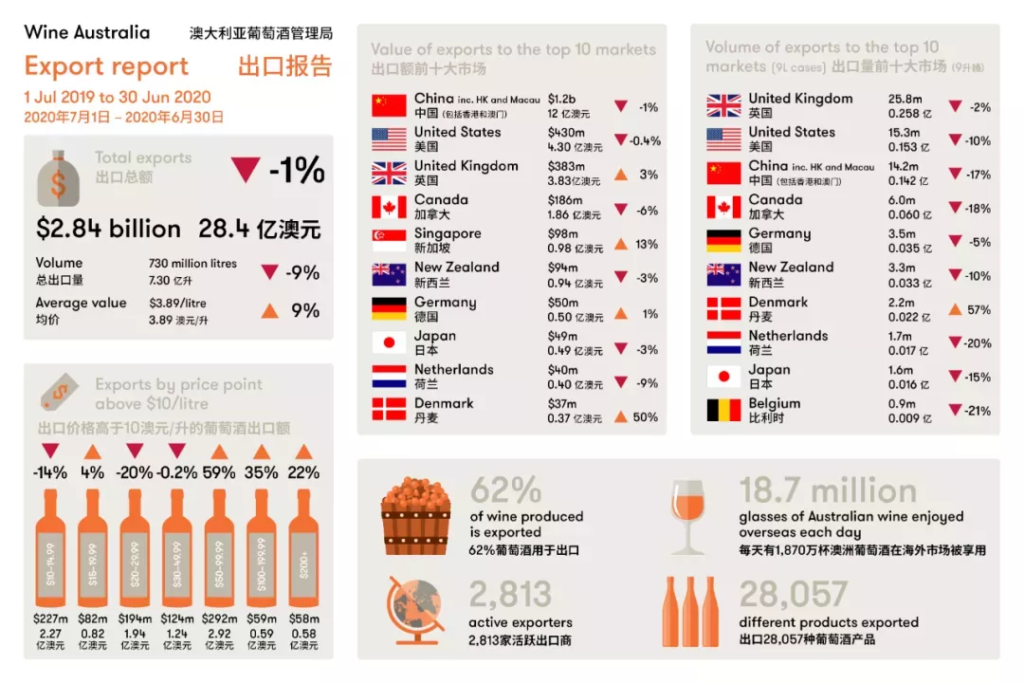
UpDaTe uPdAtE UpDaTe: I wrote a much longer more detailed version of this post for my newsletter. It’s full-length movie to this post’s trailer and you can find it here.
China’s Ministry of Commerce announced today it will carry out an anti-dumping investigation of Australian bottled wine imported from January 1, 2015 to December 31, 2019. The wine value totals billions, with Customs reporting US$780 million of Australian bottled still wine imports in 2019 and US$684 million in 2018 alone.
The investigation, based on a complaint launched by the China Alcoholic Drinks Association, comes at a time of tension between the two nations, a time of Australia dominating China’s imported wine sector and the local wine industry’s continued struggles. It also comes about two years after much coverage of what many saw as an excess of Treasury Wine Estates products in the market.
Leader by value, volume
Australia has taken over as the imported wine leader in recent years, due to a free trade deal with China, a reputation for food safety, plenty of consumer-friendly “bottled sunshine” and an established flagship brand in Penfolds, among other factors. That status continued this year.
Customs data for the first six months of 2020 shows that Australia bottled wine had a 38.2 percent by share by value versus 26.3 percent for France and 13.1 percent for Chile. Italy and Spain were far behind at 6.7 and 6.0 percent.
Australia also led by volume, 25.1 percent versus 22.2 percent for France and 20.9 percent for Chile. Spain had 9.8 percent, Argentina 8.3 percent and Italy 6 percent.
Given these numbers, it is no surprise Australia has the highest value per liter of any major source, at US$5.9 versus US$4.6 for France and US$4.31 for Italy. For other major volume sources, value was US$2.4 per liter for Chile, US$2.3 for Spain and US$0.8 for Argentina.

Top export market
China is Australia’s top wine export market. According to Wine Australia, the value of exports to China in the year leading to June 30 was AU$1.2 billion versus AU$430 million for the US, AU$$383 million for the UK and AU$186 million for Canada.
For volume, China only ranked third: Australia sent 25.8 million 9-liter cases to the UK versus just 15.3 million for the U.S. and 14.2 million for China. These numbers underscore that China is a lucrative market for Australia more in terms of value than volume.
Treasury Wine Estates, particularly flagship brand Penfolds, represents a great deal of Australia’s presence in China, especially for value. Another major source is Australian wineries with Chinese investment, sometimes linked to citizenship purposes.
(Last November, I tried to estimate Penfolds market presence, as neither the company nor Wine Australia would provide numbers. The estimate is Penfolds / TWE had as much value as all Chile — or of Italy and Spain combined. Others believe that number to be higher. Add imports from Australian wineries with Chinese investment and you are talking about the vast majority of Australian wine entering China by value. See my post, Penfolds Nation.)

Local wine woes
The anti-dumping investigation comes as China’s own wine industry is struggling. Despite over a thousand medals in wine competitions, such as those run by Decanter and Concours Mondial, as well as positive reviews from leading critics, local wine producers as a whole have had difficulty selling their goods. Some in the trade are appealing to national pride, including a new “Chinese people drink Chinese wine” slogan, but it’s not clear if consumers will respond.
And, in a nod to the power of Australian wine here, one of China’s most promising wineries, Xige (Pigeon Hill), is often referred to as the Penfolds of China, with a manager who founded distributor Easy Cellar and handled the likes of Penfolds Max. See here for more on Xige’s new retail outlet.
(As readers of this site know, I am a fan of many Chinese wines, but find consumers are often wary, due to their experiences from an era with less focus on quality and to prices that are relatively high versus imports. There is also sometimes the issue of actually finding the wine, the focus of a rant in a recent issue of my newsletter.)
Thus, the anti-dumping investigation comes at a time of not only political stress between China and Australia but also substantial economic stress on a local wine industry that, despite strides in quality, has struggled to compete against the growing flow of imported wines, led by Australia.
In any case, don’t expect a fast decision on this case. The investigation is set to take a year, with the possibility of an extension into 2022. Perhaps we’ll have a decision by the time of the Winter Olympics.
Sign up for the Grape Wall newsletter here. Follow Grape Wall on LinkedIn, Instagram, Facebook and Twitter. And see my sibling sites World Marselan Day, World Baijiu Day and Beijing Boyce. Grape Wall has no advertisers, so if you find the content useful, please help cover the costs via PayPal, WeChat or Alipay. Contact Grape Wall via grapewallofchina (at) gmail.com.
Leave a Reply
You must be logged in to post a comment.